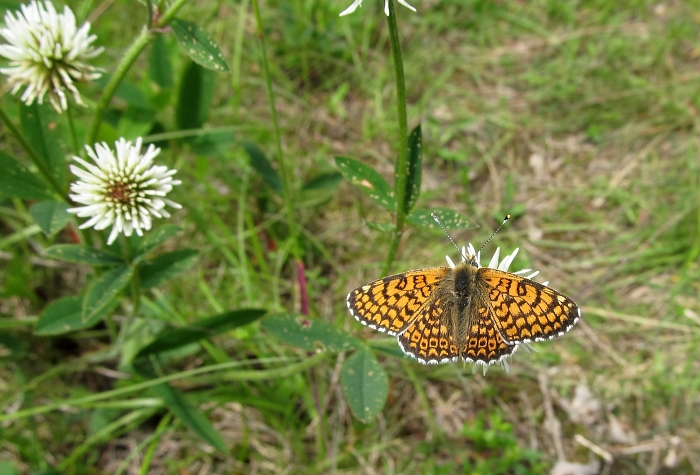Melitaea cinxia
Refresh page if pictures don't load fully:

Male, Switzerland, April 2017

Female, Switzerland, May 2017

Male, Switzerland, May 2015

Male, Switzerland, May 2014

Male, Switzerland, May 2014

Males, Switzerland, May 2016

Male, Switzerland, May 2014

Male, Switzerland, April 2014

Mating pair, Switzerland, May 2005

Mating pair, Switzerland, June 2013

Male, Switzerland, June 2013

Very dark male, Switzerland, April 2014

Male, Switzerland, May 2005

Male, Switzerland, May 2005

Switzerland, March 2011

Switzerland, March 2012

Switzerland, March 2012

Distribution
This is one of the early
fritillaries,
usually appearing in hot places in Switzerland by the end of April and
always on the wing in May. Further north, and at altitude, its season
starts later. In most of its range there is a single, protracted brood,
flying into July or even August in the south-east. In warmer parts of
Spain, France, Italy and Switzerland there are two broods. Males are
conspicuously territorial butterflies, perching on leaves or
flower-heads relatively close to the ground and frequently zooming off
after passing insects. They also gather at moisture. For these reasons,
males are more often seen than females. This is a heat-loving butterfly.
There is generally no problem identifying the Glanville fritillary. Unlike similar Melitaea species, it has a row of dark spots in the post-discal spaces on the hindwing - readily separating it from heath and meadow fritillaries, for example. Some knapweed fritillaries have these spots and may look generally similar (knapweed fritillary is extremely variable), but this latter species always has a swollen submarginal lunule in s.3 of the forewing, easily visible on the upperside. Glanville fritillary has at best a slightly larger lunule here. In the Balkans, Freyer's fritillary, Melitaea arduinna also has the hindwing spots but is larger and redder, with more rounded wings. I have yet to see this species. From beneath, the Glanville fritillary has a distinctive, rather spotty appearance (though not as spotty as in spotted fritillary). The strong, dark spots in the post-discal band separate it from all Melitaea species except arduinna.
The caterpillars are
gregarious, and may
sometimes be encountered in large groups in March, shortly before they
disperse to pupate. They are easily recognised by their black bodies
and bright red faces. They hibernate in webs while small. In most of
Europe the foodplants are various plantains, though in fact there is
quite a long list of possible hosts, including speedwells. In the UK,
the Glanville fritillary was formerly restricted exclusively to the
Isle of Wight, though it now flies on the mainland nearby and has been
introduced at certain other sites in the south of England.